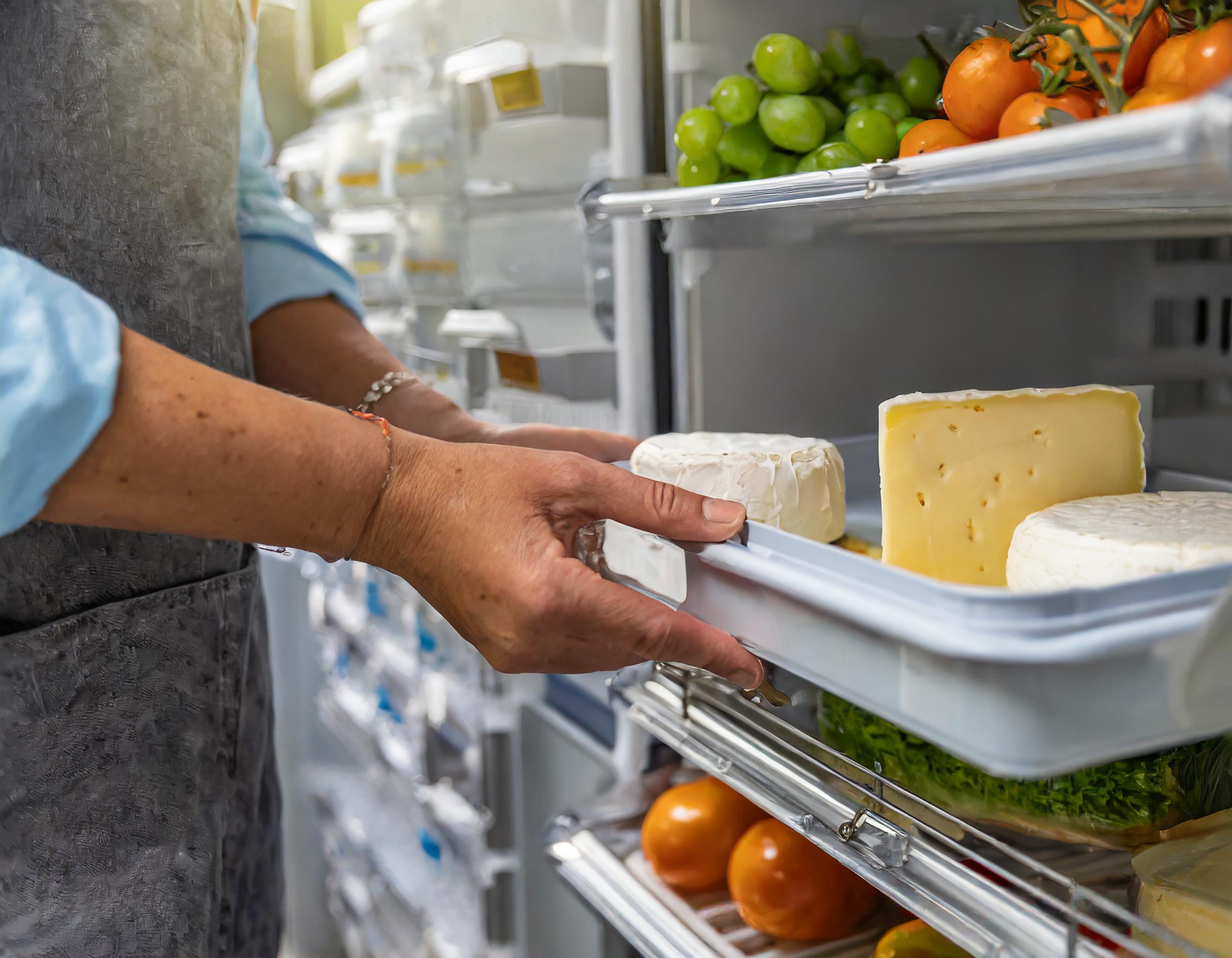6 Tips for Increasing Cheese Shelf Life

Imagine your favourite cheese adorning the cheese board. How delightful would it be to incorporate it into your preferred cheese recipe? By applying some extra care and following special guidelines, you can extend the shelf life of your cheese.
1. Proper storage
Cheese should be stored in the fridge in the crisper drawer where there’s usually a humidity control, and it prevents the cheese from picking up other food smells (or the cheese spreading its aroma to other foods).
Each type of cheese requires a different wrapping and storage in the fridge. Hard, aged cheese, such as Parmigiano-Reggiano or Grana-Padano, can be wrapped in wax or parchment paper and then tightly covered with a layer of cling film. Soft or semi-soft cheeses like Brie or Camembert should be stored in a resealable plastic container. Blue cheeses require extra care otherwise they will spread their aromas all over the fridge. So they should be wrapped in cling film or even better, use a zip-top plastic bag that allows you to suck the air out before closing it.
2. Airflow
It is critical to check the airflow when storing cheese. Cheese needs to breathe, and keeping cheese in an airtight container will help prevent the smell from escaping. Remember that too little airflow can lead to moisture buildup, which makes the cheese damp and causes mould growth. However, cheeses have unique needs of degrees of airflow, so remember to check before storing.
3. Temperature Stability
Temperature stability is essential for maintaining the quality and shelf life of cheese. Proper temperature control helps prevent the growth of harmful microorganisms, slows down enzymatic reactions, and minimises the risk of spoilage. You may keep cheese refrigerated at temperatures between 34°F to 38°F (1°C to 3°C). Remember to check the unique storage requirements for the best outcomes.
4. Maintain hygiene
Maintaining clean hands or using food-safe gloves is crucial when handling cheese to minimize the risk of transferring bacteria and contaminants that may spoil it. Regularly changing cheese bags or paper is important for cleanliness. It's advisable to inspect cheese frequently for any signs of spoilage, like mold or unusual odors, to closely monitor its freshness.
5. Find the best spot
The positioning of cheese within your refrigerator is crucial for preserving its quality. Items near the fridge door can experience temperature fluctuations due to frequent opening and closing. Therefore, placing dairy products towards the back helps maintain a consistent temperature, preventing the growth of harmful bacteria and extending the cheese's shelf life. Storing cheese in the crisper or vegetable drawer provides a stable environment, preserving its texture and flavour effectively.
6. Avoid cross-contamination
When storing cheese, it is essential to keep various types separate to prevent cross-contamination, ensuring quality and prolonging shelf life. Utilize distinct containers or wraps for each type. Additionally, ensure these storage items are clean and odour-free to maintain cheese integrity. Regularly clean the refrigerator, and store cheese away from raw meat, poultry, or seafood to avoid potential bacterial cross-contamination






Loading comments...